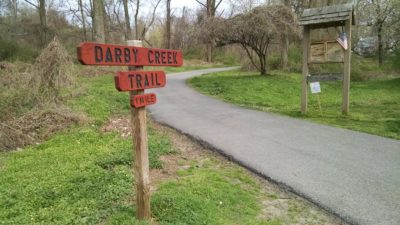Everyone has their own version of what makes them feel physically fit. For some it’s their weight. For others it’s their abs, or how much they can lift.
For me, it’s always been squatting.
Not “squats,” where I have to crouch down with a fraction of the weight of the world on my shoulders and then power that weight up to the sky as I straight my posture. Those came later.
No. Just good old regular squatting to reach something on the ground.
If I wheeze or grunt while I’m doing it, I am not in shape. That’s my litmus test. That’s what sent me to the gym for the first time back in 2011. I was not quite 30 years old and doing that little old man grunt when I bent over to pick something up.
“Uhnf,” I expel on a little puff of breath as I crouched down, or as I pressed myself back up.
A lot of that “uhnf” came from the knees. I was sure mine had gone bad from years of pounding down Philadelphia’s cracked concrete sidewalks at high speeds in my unforgiving pair of Sketchers boots.
In yoga I could not do “chair pose.” When I ran it felt as though my knees heated up like a paper clip being repeatedly bent. My mother’s knees needed replacement. For me, it was probably just a matter of time.
“Should’ve gone with Doc Martens,” I’d muse. Oh, the folly of youth.
I felt fit at some point in my original gym adventures earlier this decade, which meant my squatting was not bad. No more little puff of complaint at their nadir. My opinion of my knees did not change.
I shared that same opinion with my friend Alison when she coaxed me to start weight training in 2016. Why did I use only half of the weight I needed to use for squats (this time the real sort of squats that required that fraction of the weight of the world)?
The knees, I’d tell her. It’s all in the knees.
It’s now been two years of lifting those weights every week, with a few breaks along the way. I’ve had a lot of little niggling problems in that time – ankles and cramps and my back and a whole litany of other little weaknesses to overcome.
Never the knees.
I realize now that the problem was never my knees. The problem was how I was using them. The only way I used my legs before 2011 were as massive pistons, driving my feet to the ground again and again as I walked four miles at a time. That was the only way they knew how to be strong. Any other kind of leg exercise – from running to yoga to squatting – I’d just rely on my knees to do all the work.
My legs know how to do different things now. I’ve got muscles I never had before, not just those piston pressing thighs. Squatting is fine, with weights or without. When I squat to pick something up I’m using my entire body – my abdominals, my back, my thighs, my calves.
I’ve come a long way from those squats being the delineation of my fitness. They’re not “not bad” now. They feel fine. Good, even. Sometimes I even pretend I am Spider-Man for a moment as I rock back onto my haunches.
How did I get past being weak in the knees? Back in 2016, Alison told me I couldn’t use them as an excuse. “Plenty of people have bad knees and still do modified squats,” she told me. “That’s not a reason to avoid them.”
Yoga teachers had said the same thing to me, but they didn’t know me like Alison did, since sitting on the floor in her dorm room putting together copies of my first demo CD. She met me when I was skin and bones and curly hair, before the singing lessons and the career and my relationship with E.
She knew that I didn’t let minor obstacles stop me from doing what I want, so she made me knees into an obstacle rather than my weakest point. “Just work around them,” she told me, and so I did – and it turned out that working around them was exactly what I needed to do.
I am trying to transport this little lesson about squats and knees into other areas of my life. Sometimes your perceived weakness is about a lack of strength somewhere else. The place where you perceive the symptoms of a problem isn’t always the spot that needs curing. Sometimes your perceived weakness is about a lack of strength somewhere else.
Whether it’s squats or something else, our metrics of success measure more factors than we might realize at first.

 Then, I remembered reading a
Then, I remembered reading a